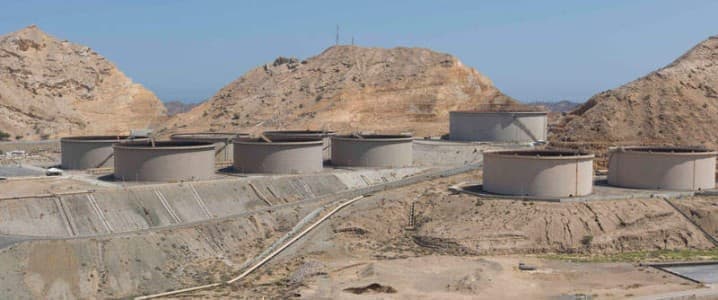Oil & Gas
OMAN INCREASES ITS APPEAL TO CHINA AND IRAN WITH GAME CHANGING DUQM PROJECT.
Irene Jerry

The long-awaited Duqm Refinery Project (DRP), valued at US$8.5 billion and capable of processing 230,000 barrels per day (bpd), was officially inaugurated on 7 February. This project, along with ancillary projects costing approximately US$10 billion, enhances Oman's appeal to China and nearby Iran. Oman conceived the Duqm project as a means to maximize returns from its relatively modest oil and gas reserves (around five billion barrels of oil and about 24 trillion cubic feet of gas) by refining these resources into higher-value petrochemical products. However, the major challenge Oman faced with the Duqm project was the significant upfront investment required for building a petrochemical presence, which left a substantial gap in its finances.
China, recognizing Oman's strategic importance beyond its oil and gas resources or refinery plans, quickly capitalized on its position as the destination for around 90 percent of Oman's oil exports. China invested US$10 billion in the Duqm refinery project, followed by multiple other deals. This investment aligns with China's broader strategic interests, particularly its Belt and Road Initiative (BRI), aimed at securing control over key crude oil shipping routes from the Middle East into Europe, avoiding more expensive and politically sensitive routes.
The Duqm Refinery Project is a significant step for Oman, complementing the Liwa Plastics Project (LPP) industrial complex and the Sohar refinery in the Special Economic Zone at Duqm. Additionally, the Muscat Sohar Product Pipeline (MSPP), spanning 290 kilometers, will transport refined products, further advancing Oman's integrated refining and petrochemical business. These developments, funded by China, will enhance China's control over Oman, including the strategic assets involved in these projects, as repayment is tied to a schedule with potential forfeits for non-payment, granting Beijing more influence over the sultanate.
China also seeks to use Oman's liquefied natural gas (LNG) processing capability to support Iran's LNG business. Iran plans to utilize at least 25 percent of Oman's total 1.5 million tons per year LNG production capacity at the Qalhat plant. This collaboration stems from a broader cooperation deal between Oman and Iran, originally made in 2013 and ratified in 2015, centered on Oman importing natural gas from Iran. However, the U.S. has sought to prevent Iran from expanding its hydrocarbons export routes, including through Oman, as part of its sanctions efforts.
In summary, the Duqm Refinery Project and related developments mark significant steps for Oman's economy and strategic positioning, with China's investments playing a crucial role in these advancements.
